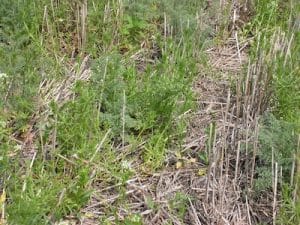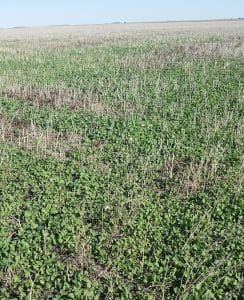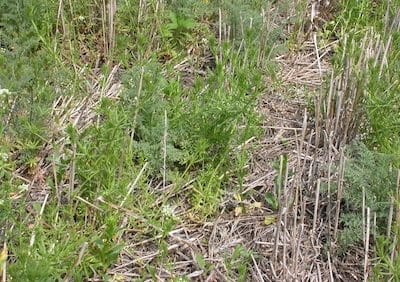While it’s too late to spray effectively, growers and agronomists can check fields for the presence and population of winter annual weeds before the snow flies. This information can help with spring pre-seed burnoff and crop rotation planning.
Cleavers are fairly thick in some fields this fall, and once they start up in the spring, they’ll be growing quickly and taking up nutrients applied in the fall. Any additional spring growth also makes them that much harder to control. Early management with a higher rate of glyphosate may be required — even if it means going back with a second pre-seed burnoff a couple weeks later.

Cereals provide a few other pre-seed and in-crop control options for cleavers, so if the situation is severe, rotating from canola into cereals is an option in these intense cleavers areas.
Winter annuals may be bigger and in higher numbers due to the fairly long fall with good moisture.
These conditions also produced a heavy fall crop of volunteers. Germination of these harvest-lost seeds in the fall is generally positive in that the annuals die over the winter, creating a significant drop in the weed seed bank. However, here’s something to keep in mind for next fall:
Volunteer canola that lives longer than 2 or 3 weeks can contribute to clubroot pathogen levels in the soil. Galls can form within that time and soon start to produce spores. In areas with known and heavy clubroot pressure, long-lived canola volunteers (or other host weeds) can produce a disease bridge for clubroot. In a long-fall with high numbers of canola volunteers, fall control of these volunteers may be recommended.


